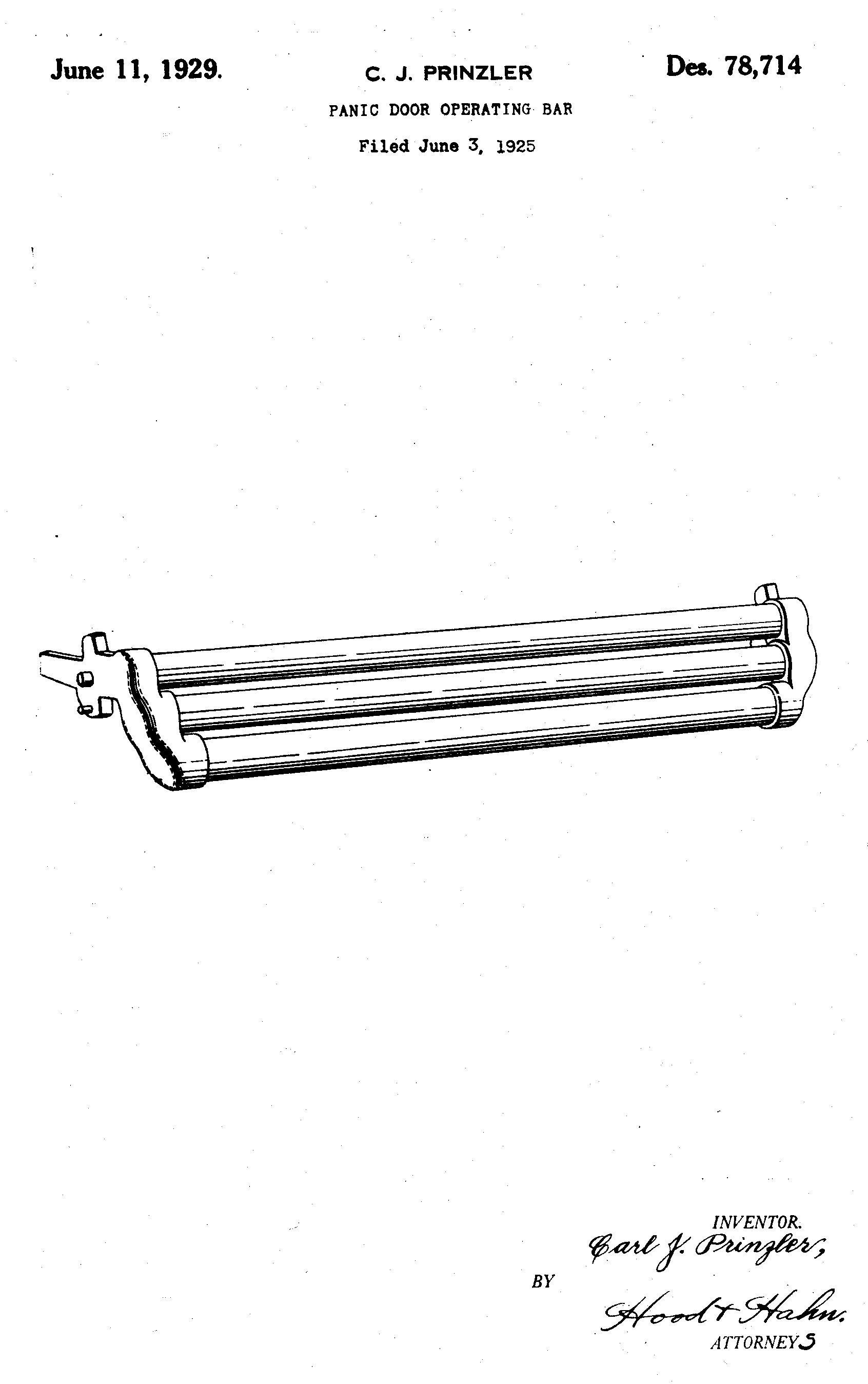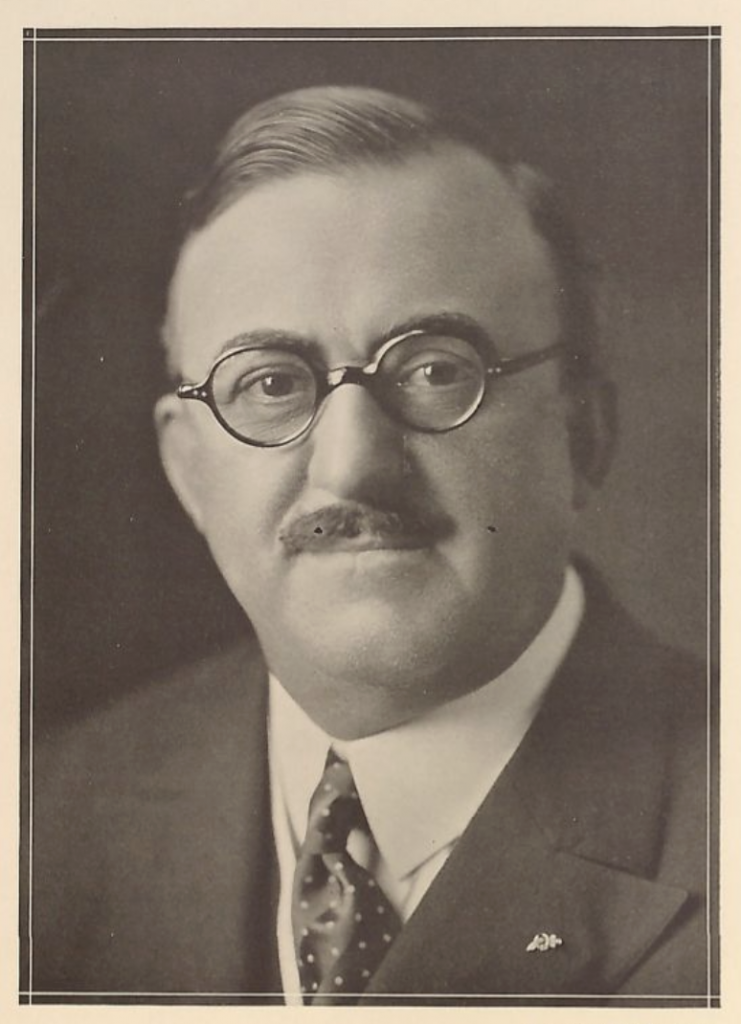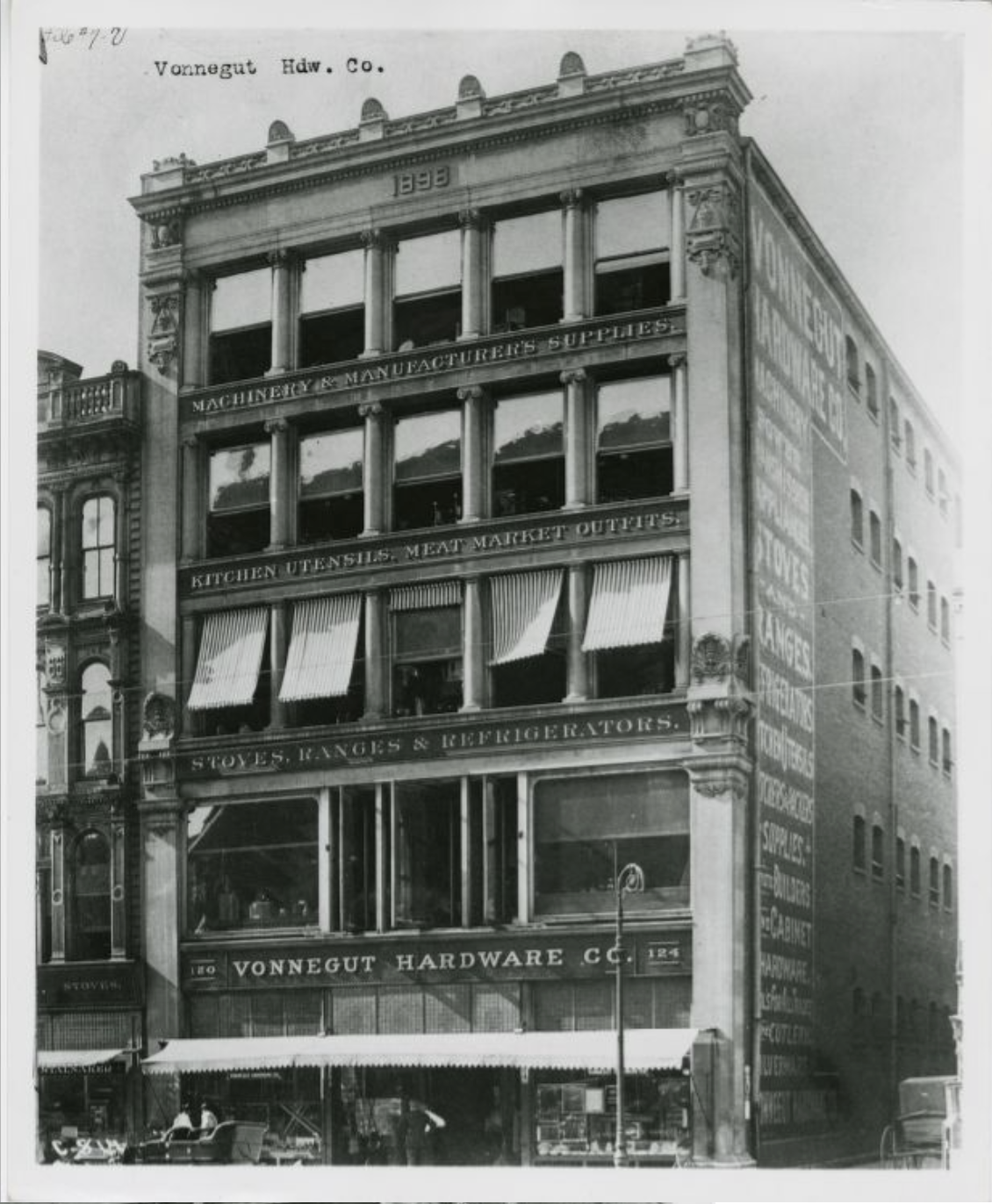Carl Prinzler, manager of the Builders Hardware Department at , developed the idea for the panic bar after a fire killed 596 people at Chicago’s Iroquois Theatre on December 30, 1903. Considered entirely fireproof, the two-week-old theater caught fire when a broken arc light ignited muslin curtains, which in turn ignited the wooden trim throughout the entire theatre. Inadequate fire extinguishers and no fire alarm box or telephone allowed the fire to spread. As people attempted to flee the building, the audience became trapped behind exit doors that would not open, a preventive measure to keep people without tickets from entering the venue.

Prinzler intended to attend the event, however, his plans changed. Realizing that he could have been killed, he committed himself to develop a device that would prevent a recurrence of such a tragedy.
In discussions with his associates following this tragedy, Prinzler learned that most loss of life in public venue fires resulted from people jamming against the exit doors. In some cases, the doors opened inward or lacked a lock-release feature. Working with his neighbor Henry DuPont, an architectural engineer, the two men set out to design and develop a device that would open outward, always allow exit, and prevent entry from outside. They landed on a mechanism featuring a single-lever crossbar that extended the width of an exit door. Mounted waist high from the ground, light pressure to the panic bar would unlatch a bolt and pop open a locked door.
Prinzler and DuPont submitted patents for an “Emergency Exit Attachment for Knob Latches” in October 1908. They submitted a subsequent patent for an “Emergency Exit Lock” in November 1908. Overall, the men received nine patents relating to the new exit door hardware.
Prinzler and DuPont partnered with Vonnegut Hardware Company to manufacture, market, and distribute the patented device under the trade name Von Duprin, an amalgamation of the three partners’ surnames (VONnegut, DUPont, PRINzler).

The first Von Duprin device reportedly was installed on one door of an Indianapolis high school in 1908. Shortly thereafter, every school in Indianapolis installed the device.
In 1910, Vonnegut Hardware Company began to sell the Von Duprin Safe Exit Device. The store established a separate department to manufacture and distribute the exit hardware. Local architect Oscar D. Bohlen (son of ) implemented the panic bar as part of the design specifications for the not only to make the building safer but to publicize the use of the new device. In March 1910, the Indiana state factory inspector confirmed the new theater exceeded Indiana theater safety law requirements.
Most other public buildings in Indianapolis soon implemented the panic bar, setting standards for the rest of the nation to follow. Locally, the device proved useful when Benjamin Harrison School No. 2 in Indianapolis caught fire in 1911. Within 45 seconds, every student escaped the building that equipped every door with Von Duprin devices.
A network of independent sales representatives marketed and sold the Von Duprin Safe Exit Device both nationally and globally. Sales in Europe slowed during World War I due to its German-sounding tradename; therefore, the tradename “Prince” was used for a short time in Europe to circumvent any confusion about the device’s provenance.

Von Duprin prepared a 16mm film titled “Safe Exit” in the 1940s. Vonnegut Hardware Company offered the film as a public service rather than a commercial project to drum up sales. The company produced multiple reels of the film that shipped for free, nationally and globally. By 1952, fire marshals, schools, and plant safety directors in more than 500 cities across the U.S. had shown the film.
By this time, most architects and safety authorities recognized the Von Duprin exit hardware as the most practical and dependable safety mechanism on the market. The United Nations headquarters in New York City (1947) and the Statler Center and Hotel (for which Los Angeles in 1950 issued its largest building permit to that time) were two of countless buildings across the United States designed with the Von Duprin device on all exit doors. Most states required its use in places of public assembly such as schools, hospitals, and theaters. The Von Duprin became so instrumental to public safety that individual property owners were held legally responsible and indicted for manslaughter when the lack of the exit hardware caused loss of life during a panic-raising event.
Vonnegut Hardware Company continued to innovate and improve the exit hardware. It developed important accessories for the panic bar, such as a dual adjustable roller strike for smooth, reliable, self-closing action; a removable frame pattern mullion that formed divisions between units of a door; a “Latch-Track threshold” that provided a door stop and a seal at the bottom of the door; a compensating metal astragal that closed gaps between pairs of doors; and coordinators, designed for use on pairs of doors when one door needs to close before the other.
Vonnegut Hardware Company owned the Von Duprin exit hardware division until Schlage Lock Company purchased the business on June 1, 1966. Schlage, an American lock manufacturer founded in San Francisco in 1920, later became part of Ingersoll Rand, a company that focuses primarily on the manufacture of air compressors, engines, and turbochargers, creating Ingersoll Rand Door Hardware Group in 1974. Ingersoll Rand controlled more than 50 percent of the panic bar market by the 1980s.
In 2013, Allegion, a new international security company, acquired Schlage and the rest of Ingersoll Rand Security Technologies, including Von Duprin. In 2022, Allegion continues to innovate and sell the Von Duprin device with changes to the original design that include a push bar with handles.

Help improve this entry
Contribute information, offer corrections, suggest images.
You can also recommend new entries related to this topic.

